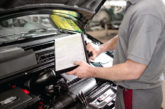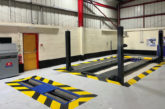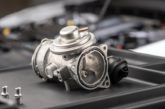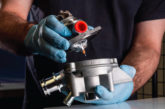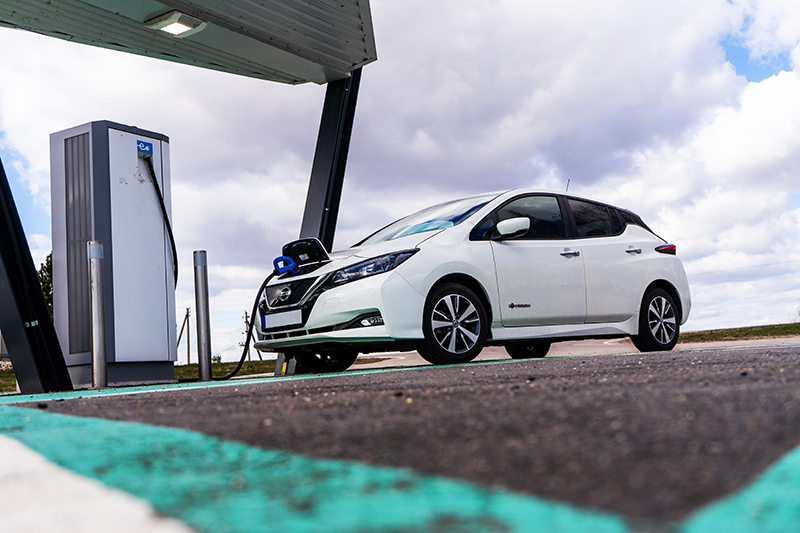
Steve Carter, EV training consultant for Group Auto & UGS, outlines some of the charging problems and solutions facing the EV market.
Having now driven over 100,000 miles in electrical vehicles, over the last six years the biggest change I have seen is the massive improvement in the rapid changing network, either at existing motorway service stations or the new EV charging hubs and within these, the rapid expansion of the HPC stations.
Lest go back to 2011 when the Nissan Leaf arrived in the UK – the first mass production EV which supported rapid charging.
Between Nissan and Ecotricity, a modest charging network was established at the majority of motorway services, comprising possibly one or two charging stations (about 200 charging points) capable of delivering 50kWh of charging output; not too shabby when you consider the battery capacity of that leaf was just 24 kWh. So even with a very discharged battery a good charge would only take around 30 minutes, or the average time somebody would stay at the motorway services.
Over the next 10 years battery energy density increased dramatically, so that the Leaf that you could purchase now has seen an increase of 260 per cent to 62 kWh, but the weight has only increased by 15 per cent.
The problem now is that 50 kWh charging is too slow and at the same time people are spending less time at motorway service (around 20 minutes). Considering that most EVs now have a battery size of between 75 and 90 kWh, at our original charging speed a charge to 80% would now take about 90 minutes.
We could obviously increase the charging current, which would increase the charging output. However, we would need to keep this in moderation as too high a current increase would lead to higher temperatures in the battery and the rapid charging system. We could probably go as high as 275 amps at 500V, allowing a charging speed of 150 kW, which is really going to be our limitation at 500 V, leaving us somewhat short of our ideal charging time of 15 minutes.
Other options
Most EVs run at around 400 V and to charge this at 100 kWh we will need a current output from the charging station of 250 amps, still taking about 45 minutes to complete.
The next option would be to double the vehicle’s high voltage system and indeed this is what Audi, Porsche, Kia and Hyundai have done, launching their 800 V systems. Now, with just a modest increase in current, to say 300amps, and with the doubling of the voltage this means our charging output is around 250 kWh.
These vehicles can now receive a 10-80% charge in just 15 minutes. Indeed, the charging stations are futureproof and have the capacity to output charging speeds of 350 kWh, which would mean a charge to 80% in the future could be done in less than 10 minutes.
This improvement has required significant investment by the charging station manufacturers, one of the largest of which is ABB. To cope with this increase in output, its charging cables are now liquid cooled. To charge higher than 300 kWh the next upgrade would be to the charging socket on the vehicle which would also require liquid cooling.
The next challenge for our vehicle manufacturers running the 800 V systems is compatibility; at present the number of 800 V charging stations is limited with the majority still only 400 V. How, then, are we going to charge our 800 V vehicles on 400 V charging systems? We could equip the car with an onboard DC charger and this is indeed what Audi and Porsche have done. However, this comes with significant drawbacks: there is a cost to the vehicle manufacturer for this on-board charger; there is a weight penalty; and you will probably have to limit this charger to a modest charging speed of about 50 kW even if the station supported charging outputs of 150 kwh at 400 V. So, you may have an 800 V system but if you connect to a 400 V charger you will charge no faster than our Nissan Leaf from 2011.
So what has Hyundai and Kia done with their 800 V systems to cover these lower voltage chargers? These vehicles use the warnings of the motor and the inverter to boost the voltage from the 400 V of the charger to the vehicle’s 800 V system, charging the battery. Clearly there is no additional component because the motor and the inverter are already present. Given that these motors and inverters are rated at well over 150 kW they are more than capable of charging within the 150 kW of the current majority 400 V chargers.
You could now get an 80%t charge in around 23 minutes on this type of station.
As you can see, rapid charging has now become a lot more complicated for our customers and ourselves and will still have two further issues:
- As far as I am able to clarify, all charging station manufacturers have now dropped support for the CHAdeMO system. This charging system is used by a few Japanese manufacturers, in particular Nissan, Toyota and Lexus. This could mean that in the not too distant future it could become more difficult for owners of these cars to charge at motorway services. There is currently no adapter to allow this socket to be used with the CCS charging system, the socket that all other vehicle manufacturers are using, due to the different protocol that the CHAdeMO and the CCS sockets use
- Due to increases in energy costs, the price per kWh of charging your electric vehicle at motorway services is now dependent on the speed of the charger and you will pay a higher price per kilowatt. Until now this really did matter as it was the same cost for all chargers. Now there will be no point in somebody with a 50 kWh-limited car using a station that can charge a 150 kWh and is therefore paying a much higher price for functionality their car cannot support
This is just a brief overview of the new rapid charging systems coming to market. As an independent garage you will need to understand them and advise your customers accordingly. Having purchased three electric cars in recent years, my advice is not to turn to the dealerships for advice.

